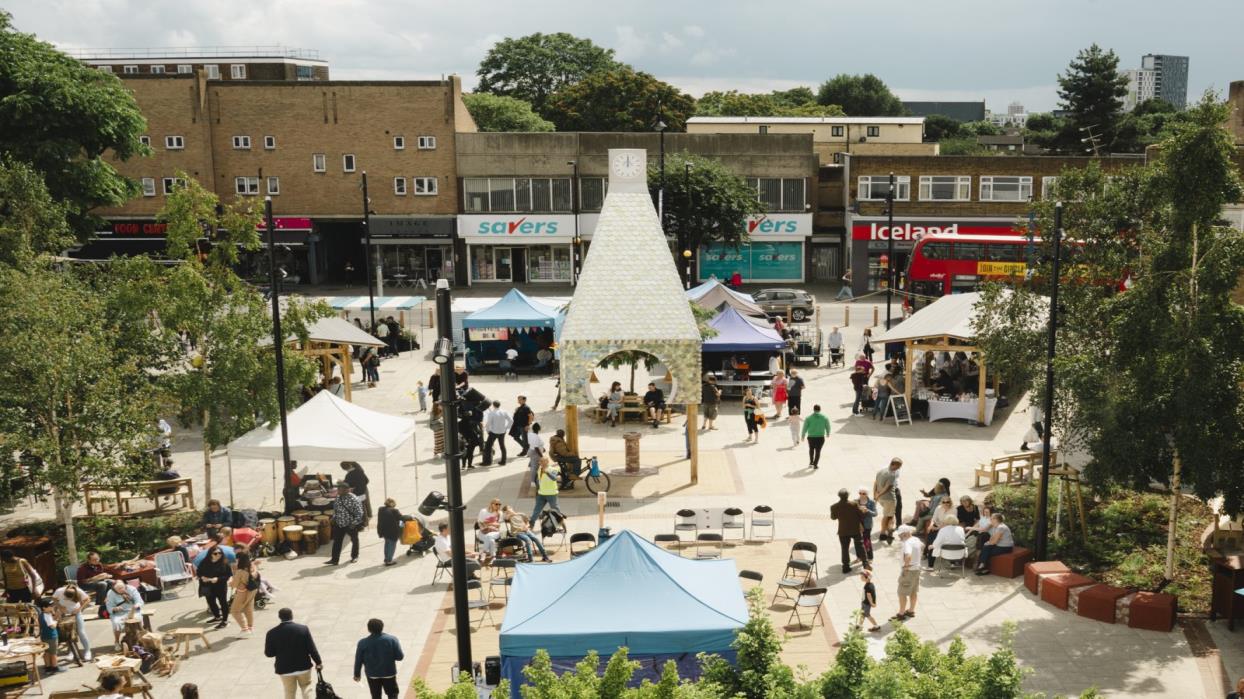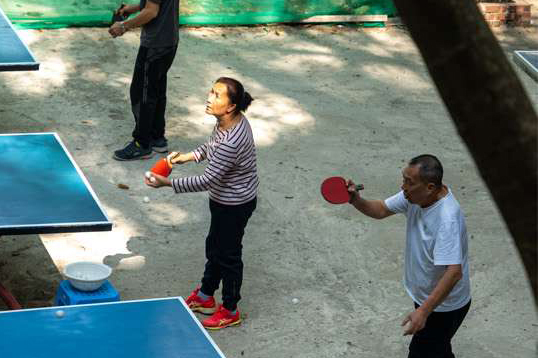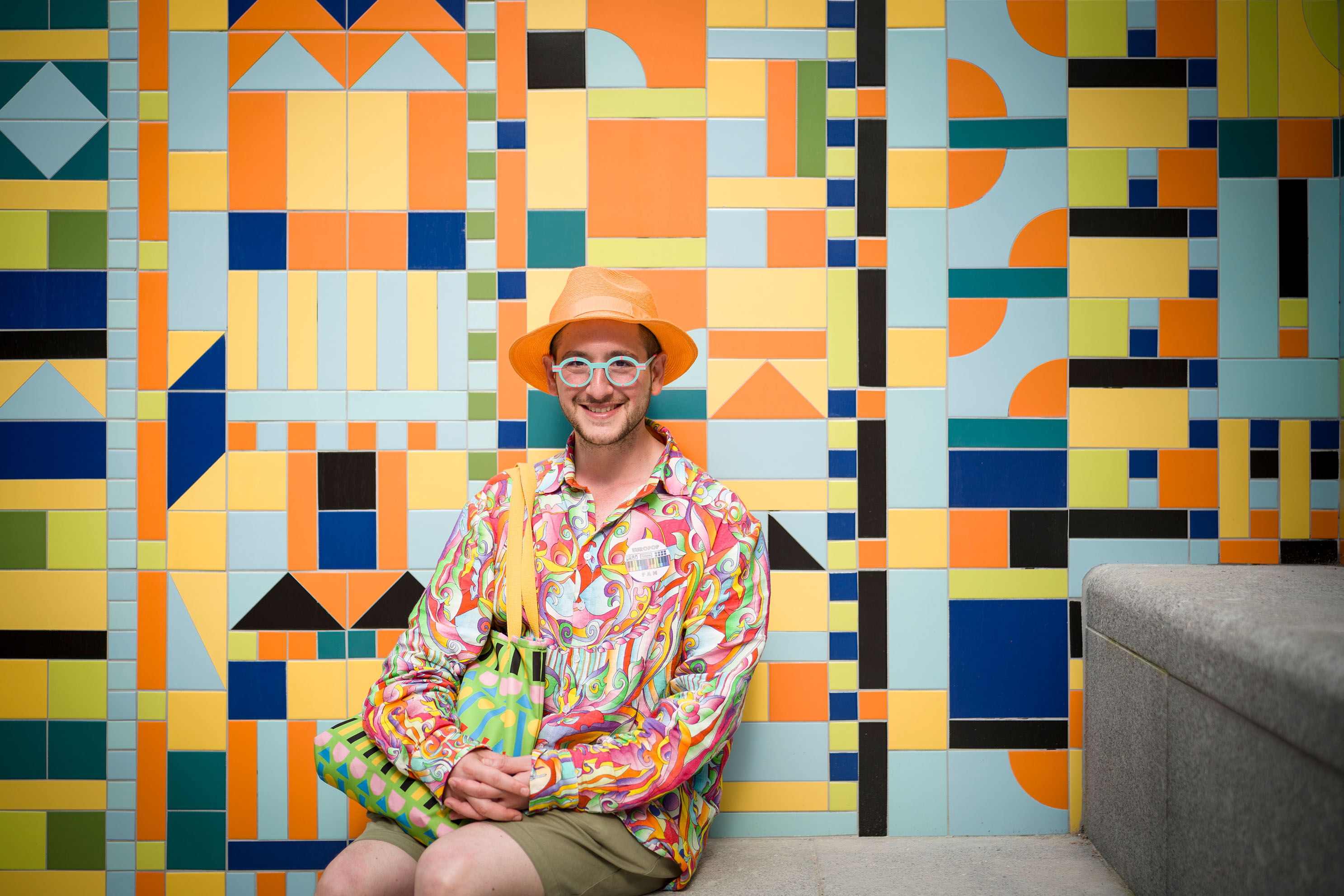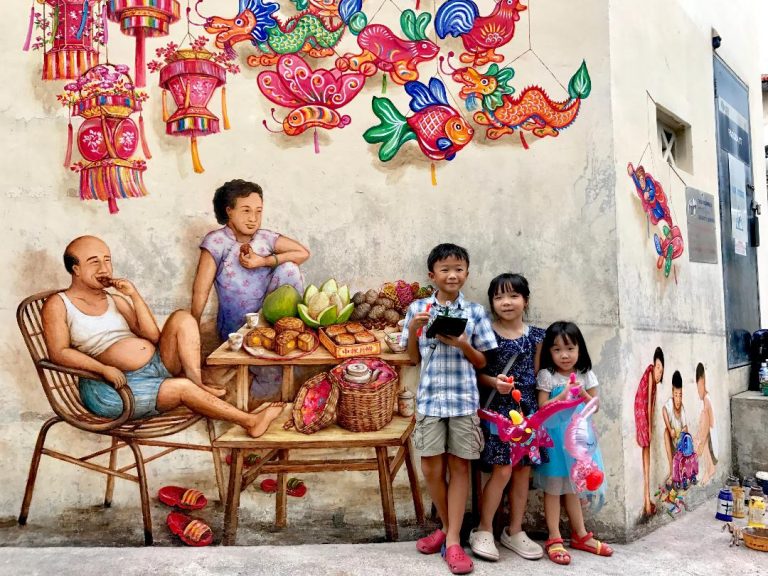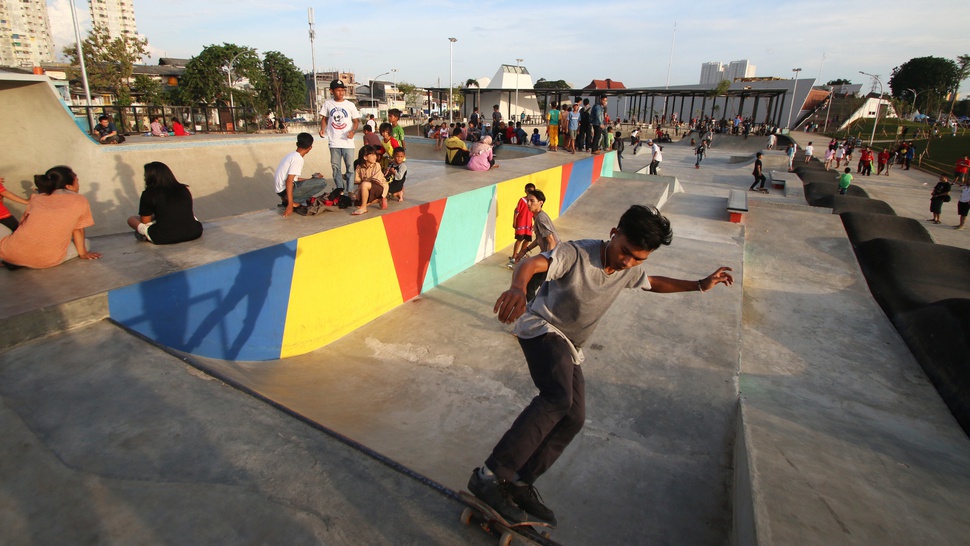Co-design is growing in popularity among UK-based designers and developers for its ability to allow non-designer end users to have power in shaping their environments. After all, while they may not be experts in design, they are experts in their own experiences of their environment. And involving the community can help to increase usage of the space, commensurately reducing social isolation, which has been shown to have negative effects on morbidity and quality of life.
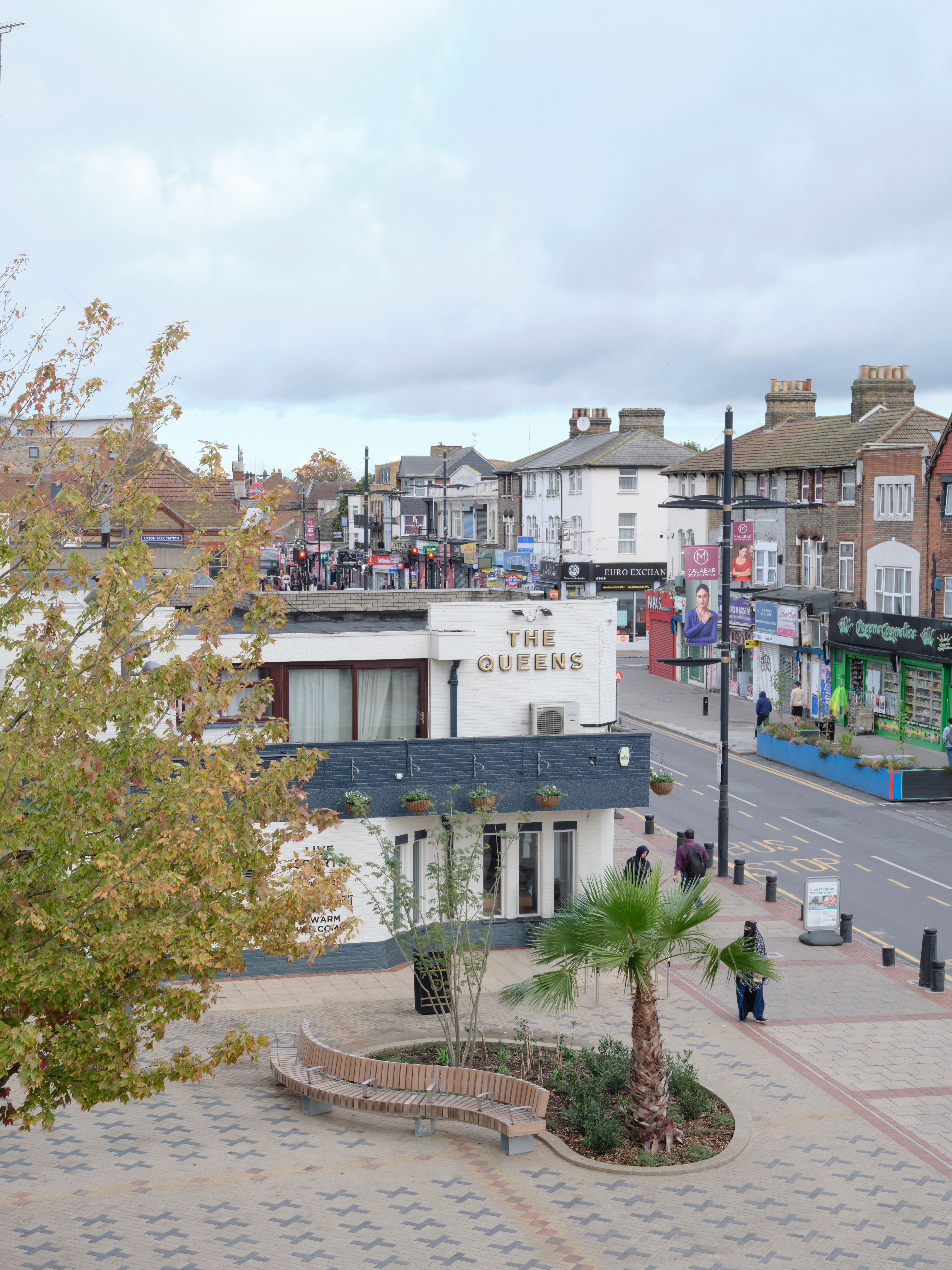
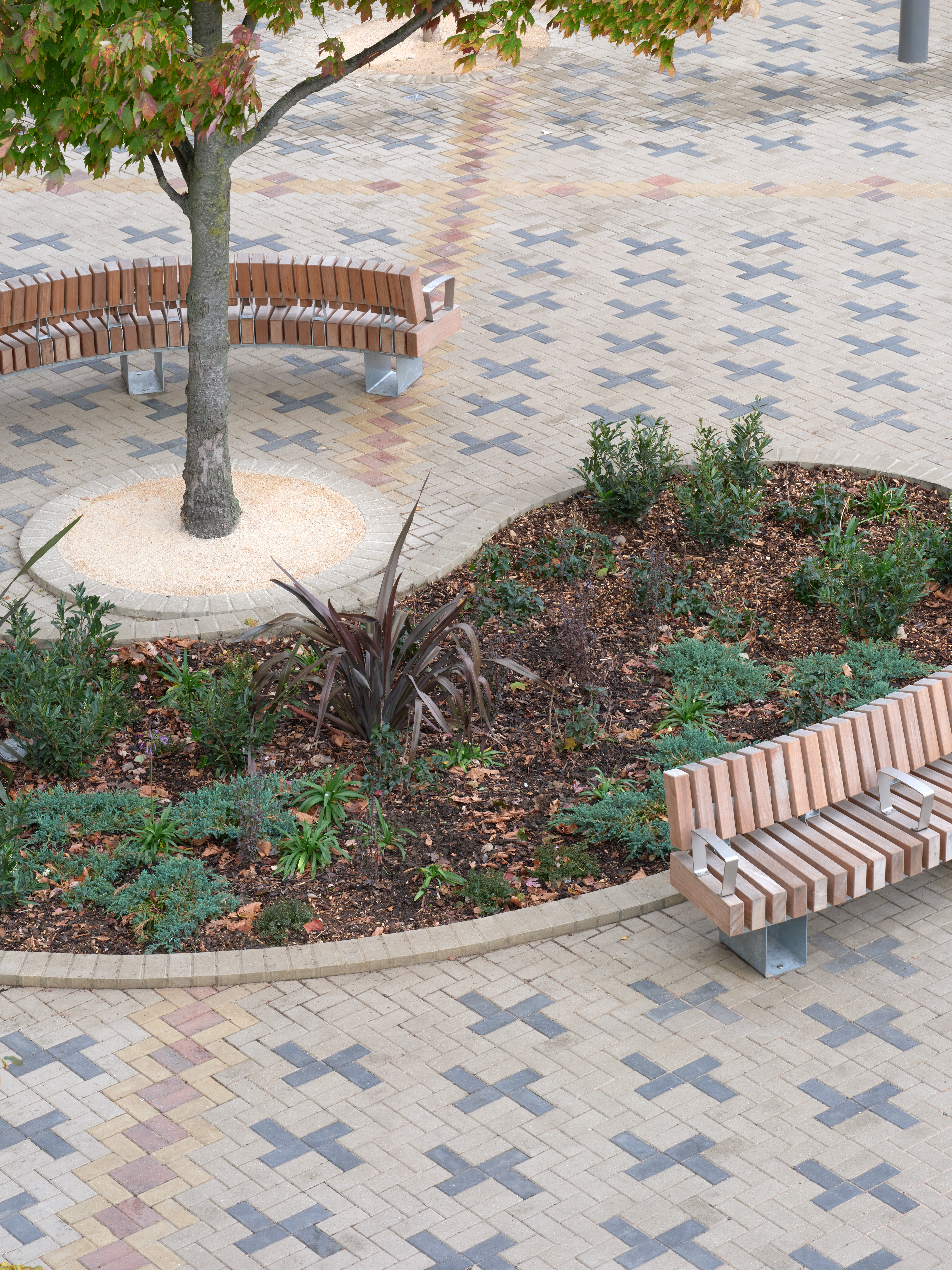
Photo Credit: Thomas Adank
Multidisciplinary architecture and design practice JA Projects was behind the recent renewal of Queen’s Market and Queen’s Square in Newham, an under-served, multi-ethnic area of East London. Set beside Green Street, the square is located directly in front of the Hamara Ghar sheltered housing complex.

Photo Credit:Friends of Queen's Market
JA founder Jayden Ali says that the practice set out to ‘collaboratively restore a place truly rooted in community.’ Its Talking Shop programme encompassed a series of events to engage as wide a cross-section of the community as possible. Subsequent events allowed people to trial design elements, such as seating arrangements on the square.
The most distinctive feature of the new square is a repeating floor pattern reminiscent of the carrom game boards JA Projects used to engage people during the programme. Benches joyfully swirl around raised beds, planted with both native and non-native trees and shrubs to represent the diversity of the area. ‘We wanted to make people feel at home in the square,’ Ali explains. Refined and re-energised, the square has once again assumed its civic role in bringing the traders, shoppers and residents together in one place.


Photo Credit: Assemble (left), Hannah Thual (right)
For the redevelopment of The Blue Market in Bermondsey, South London, Hayatsu Architects involved the community in several elements, including through a series of making workshops for residents to help create tin-can ‘tiles’ that now clad the main clock tower in the square. This harks back to Bermondsey’s history as the world’s first commercial food canning operation, and embossing patterns onto discs was easy and fun for all age groups.

‘Involving users in the process of designing and making enhanced the sense of ownership of the square,’ says founder Takeshi Hayatsu. The Blue Market has since attracted new traders and increased its footfall significantly, hand in hand with other improvements such as new green space and cut-through routes.
Visual artist Verity-Jane Keefe led the co-design process for the renovation of The Moorings Sociable Club in Southeast London, one example of utopian post-war development that has become synonymous with urban decay. In 2014, non-profit housing association Peabody took over custodianship of the estates, and in 2018 secured funding to refurbish the long-abandoned club.

‘The entire project was a pure labour of love,’ Keefe recalls. ‘The richness of collaboration, for me, came from those cups of tea on the square, from knocking on people’s doors.’ Keefe teamed up with Project Orange on the refurbishment. What was once a dark alleyway next to the entrance is now gently lit, with a large window allowing passers-by to see into its new lobby, warm and inviting. A large cabinet in the lobby proudly showcases locally made goods. The project has added a cafe, performance space and other spaces for community activities, with external terraces that let nature in.
Urban co-design is a relatively recent practice and research is still filtering in to quantify its benefits, but increasing people’s sense of belonging to a place and enhancing social ties, keeping isolation and its many resulting issues at bay, are surely inarguable goods.
Unsurprisingly, practices across the UK are beginning to push for a more collaborative approach in parks, schools and even housing schemes. As architect Rowan Riley said to Architects’ Journal in 2023, ‘You want to design for what will make the best place to live. Without true feedback, you’re not always sure if what you’re doing is what people want.’

